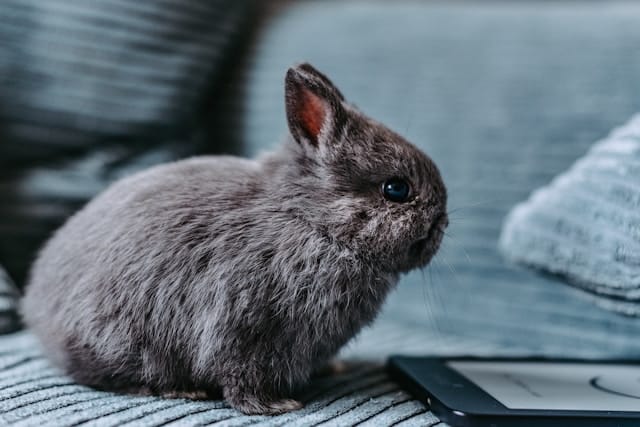What’s the Best Approach to Socialize a Rabbit with Other Household Pets?

Socializing a pet rabbit with other household pets can be a challenging process. It requires patience, understanding, and a keen eye for animal behavior. Rabbits are intrinsically timid and can be easily frightened by other animals, such as cats and dogs. Therefore, it’s crucial to ensure you handle the process with great care. Whether you’re introducing a bunny to a dog, cat, or other pet, it’s crucial to understand the unique behaviors of all involved and to invest the necessary time to ensure a smooth transition. This article will guide you through the best approaches to socializing a rabbit with other pets.
Understanding Rabbit Behavior
Before you introduce your bunny to other pets, it’s essential to understand its behavior. Rabbits are prey animals. This means they are wired to constantly be on the lookout for potential predators. While your dog or cat may have no intention of harming your bunny, the rabbit’s instinctive fear can trigger a "flight or fight" response.
Lire également : How to Create a Nutrient-Rich Diet Plan for a Parakeet?
Rabbits are also social creatures. In the wild, they live in large groups, known as warrens. They are accustomed to being around others and can form close bonds with their human caretakers and other pets if properly socialized.
It’s important to remember that each rabbit has a unique personality. Some bunnies may be more laid-back and friendly, while others might be more nervous and skittish. Hence, patience is key when introducing your rabbit to other animals.
Cela peut vous intéresser : How to Train a German Shepherd for Search and Rescue Tasks?
Preparing Your Rabbit for Introduction
The first step in socializing your pet rabbit with other animals is to ensure that your bunny feels safe and secure. Before introducing your rabbit to other pets, make sure that it is comfortable in its surroundings. Rabbits need time to adjust to new environments, so it’s essential to keep them in a quiet, secure area in your home until they feel at home.
In addition to making sure your rabbit feels safe, it’s also important to keep your other pets calm and relaxed. If your dog or cat is overexcited or aggressive, this could frighten your rabbit and make the introduction process more difficult.
One way to help your rabbit get used to the presence of other pets is through scent swapping. This involves placing items with the scent of your rabbit, such as bedding or toys, in areas where your other pets spend time and vice versa. This allows both parties to become accustomed to each other’s scent without the stress of face-to-face interaction.
The Introduction Process
The actual process of introducing your rabbit to other pets should be done gradually and under careful supervision. Always ensure that your pet dog or cat is on a leash or in a carrier during the first few introductions.
Start by bringing your other pet into the room where your rabbit is and let them observe each other from a distance. Keep the initial meetings short, increasing the time gradually with each successful interaction.
Watch for signs of aggression or fear from any of the animals, and separate them immediately if these occur. Remember that a positive introduction is not about forcing interaction but about creating a safe and relaxed environment where your pets can learn to coexist peacefully.
Building a Relationship
After the initial introductions, it’s time to encourage positive interactions between your rabbit and other pets. Give them more freedom to explore each other but continue to supervise their interactions to prevent any misunderstandings that could lead to conflict.
Your rabbit and other pets may not become best friends overnight. It’s possible they may simply tolerate each other, or they may eventually become inseparable. The key is to allow them to develop their relationship at their own pace.
You can encourage bonding by conducting joint feeding sessions. This can create a positive association between your pets and food, helping them to feel more comfortable in each other’s presence.
Special Considerations for Dogs and Cats
Dogs and cats are predators by nature, so special measures should be taken when introducing them to your rabbit.
If you have a dog, it’s important to keep it on a leash during the first few introductions. This will give you control over the situation and prevent any unexpected reactions.
For cats, it’s essential to ensure they have their own space where they can retreat if they feel threatened by the rabbit. This can help prevent any aggressive behavior from developing.
The process of socializing a rabbit with other household pets requires careful planning, patience, and understanding from both pet owners and pets. However, the reward of seeing your pets live harmoniously is well worth the effort.
Progress Evaluation and Positive Reinforcement
As you continue with the process of socializing your rabbit with other household pets, it’s crucial to evaluate the progress. Pay close attention to how your rabbit and other pets act when together. They should show signs of being more relaxed and less stressed. If you notice any signs of increased agitation, fear, or aggressive behavior, it may be necessary to slow down the introduction process or seek advice from a professional.
In terms of rabbit care, it’s beneficial to employ positive reinforcement techniques. Positive reinforcement is a process where you reward your pet for a behavior you want to encourage, increasing the likelihood of the behavior being repeated. For instance, if your rabbit remains calm with other animals around, reward it with a treat, praise, or some extra petting.
The same positive reinforcement can be applied to your other pets. If your dog remains calm when in the same room with the rabbit, give it a treat or praise. This technique can help the animals associate each other’s presence with positive experiences, thereby encouraging peaceful coexistence.
The Role of Clicker Training in Socializing Rabbits
Clicker training is another effective method that can be used in socializing rabbits with other pets. Clicker training is a type of positive reinforcement where a clicker, a device that makes a distinct clicking noise, is used to mark the precise moment a desirable behavior occurs. This helps the pet associate the click sound with a reward, usually a treat, which follows soon after.
This method can be especially effective in training dogs to be comfortable with rabbits. For instance, if your dog stays calm and relaxed when the rabbit is around, click the clicker and reward it immediately. Over time, your dog will learn to associate the sound of the clicker (and the subsequent reward) with behaving calmly around the rabbit.
Using clicker training for rabbits and other pets requires consistency and patience. If used correctly, it can significantly aid in making the introduction process smoother and more effective.
Conclusion
Introducing a rabbit to other household pets is not a quick or easy task. It demands patience, understanding, and a commitment to the wellbeing of all your pets. Following the recommended steps and employing techniques such as scent swapping, positive reinforcement, and clicker training can help facilitate a smoother transition and assist in creating a peaceful multi-pet environment.
Remember, every rabbit and pet is unique, and what works for one may not work for another. Always observe your pet’s behavior and adjust your approach as needed. The ultimate goal should be to create a safe, comfortable, and stress-free environment for all your pets.
By taking the right measures, your pet rabbit can learn to live harmoniously with other pets, turning your household into a happy and peaceful animal kingdom.
